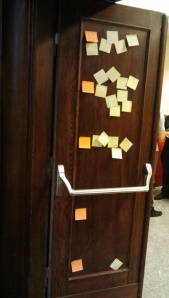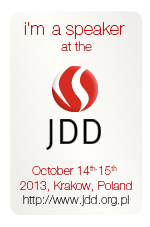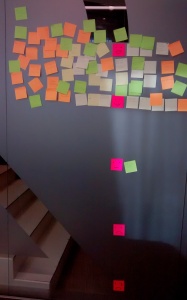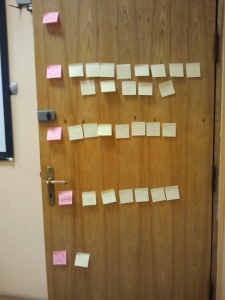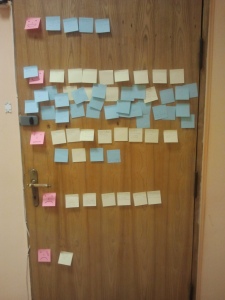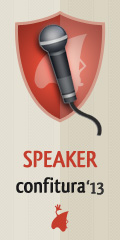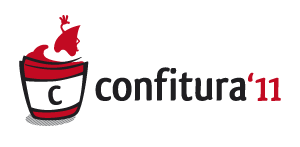The Happiness Door is a great method of collecting instant feedback. I have used it successfully on my training sessions and recently had a first try to use it after my conference speech. In this post I present my case study and the reasons why I will definitely use it on upcoming events.
Part 1. From the beginning. It becomes a tradition to end Warszawa JUG’s meeting seasons at the edge of June and July in a great style – with Confitura – the largest free conference about Java and JVM in Poland. This year the seventh edition was planned for about 1000 people and it took less than 2 days to sold out all the tickets (including overbooking). 5 parallel tracks with 35 presentations on various topics. From tuning JVM, different languages on JVM and a lot of frameworks though Java Script, Android, databases, architecture and testing to motivating people, Gordon Ramsay and company management in the 21th century. Too much to embrace during a day, but fortunately all presentations were recorded and will be available online.
My presentation was about mutation testing in Java environment with PIT. I wrote a few posts on that topic already. In a nutshell – a nice way to check how good your test really are. Writing testable code had wide representation at Confitura – I counted four more testing-related presentations.
Part 2. The Happiness Door method (if you new to this method read my previous post first). Before my presentation the sticky notes were distributed across the room and 5 smiley faces put on the door. At the begging I explained to the audience what was going on in this method and why their feedback was so important for me. Leaving the room about 50% attendees gave numerical feedback. Almost half of them had some comments (from “nice talk” to an essay placed on both sides of a sticky note :) ). Some of them were very interesting. Thanks!
I’m very happy I used this method on my speech. First time just minutes after a presentation I knew what people thought about it. In my case it was: “quite good, but there is still a field for improvement”.
Here is a good place to thank Małgorzata Majewska and Anna Zajączkowska who helped me polish many aspects of my speech.
The interesting thing is that when I have got an email from the organizers with the feedback collected using the online survey the average score was very similar, just got a month later, so why should I wait? With The Happiness Door method it is possible to get it know immediately (and even with the larger test sample).
Btw, it is not easy to prepare to the presentation (there were as always some problems with a projector) and put a sticky note on every place in the audience room (~150 seats) in 15 minutes. Thanks to Edmund Fliski and Dominika Biel for their help with a distribution.
Btw2, after the talk I had very interesting conversations with the people wanting to use mutation testing in their projects, the people already experimenting with PIT and Konrad Hałas – the guy from Warsaw who wrote MutPy – a mutation testing tool for Python.
Part 3. The slides from my speeches evolves over time. 2 years ago my slides were full of the bullet lists – the feedback – boring, to much text. Recently I had some internal presentation with less than 10 slides with no text, just images – the feedback – hard to follow, to little text. In the mean time I did an experimented with a presentation based on a mind map – mixed feedback. This time I combined images and text – some people liked it some not :). Be the judge. The slides (in Polish) are available for download.
Appendix. Thanks to Chris Rimmer for the idea of presenting IT topics using a metaphor to non IT events and people.
I hope I encouraged you to give The Happiness Door method a try. Please share your experience in comments.
P.S. Good news for all the people who missed my presentation at Confitura. My proposal was by accepted by The Program Committee and I will be speaking in Kraków at JDD 2013 (October 14-15th).

